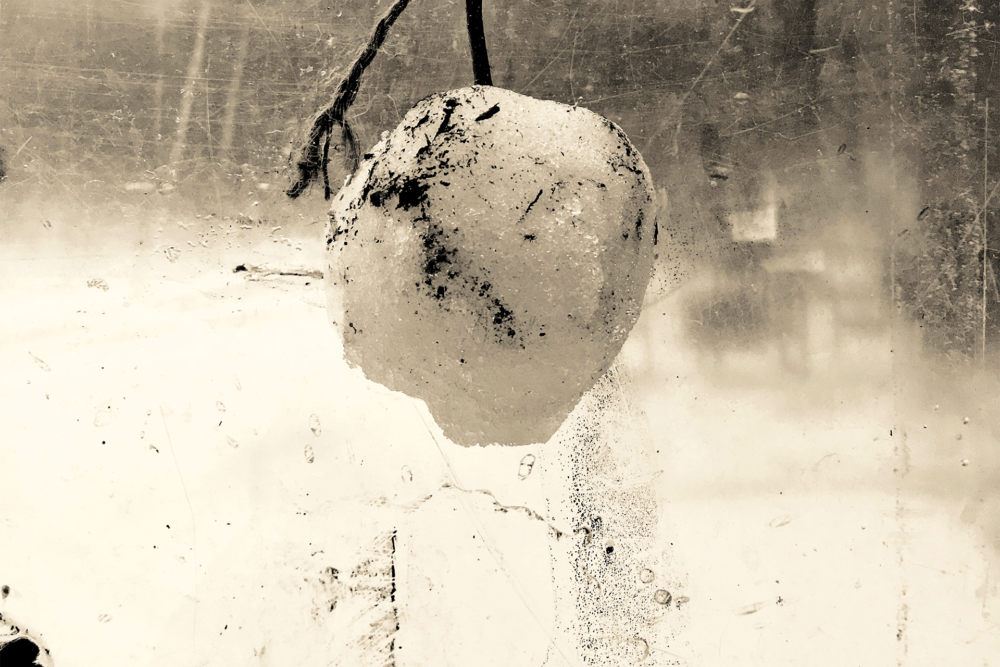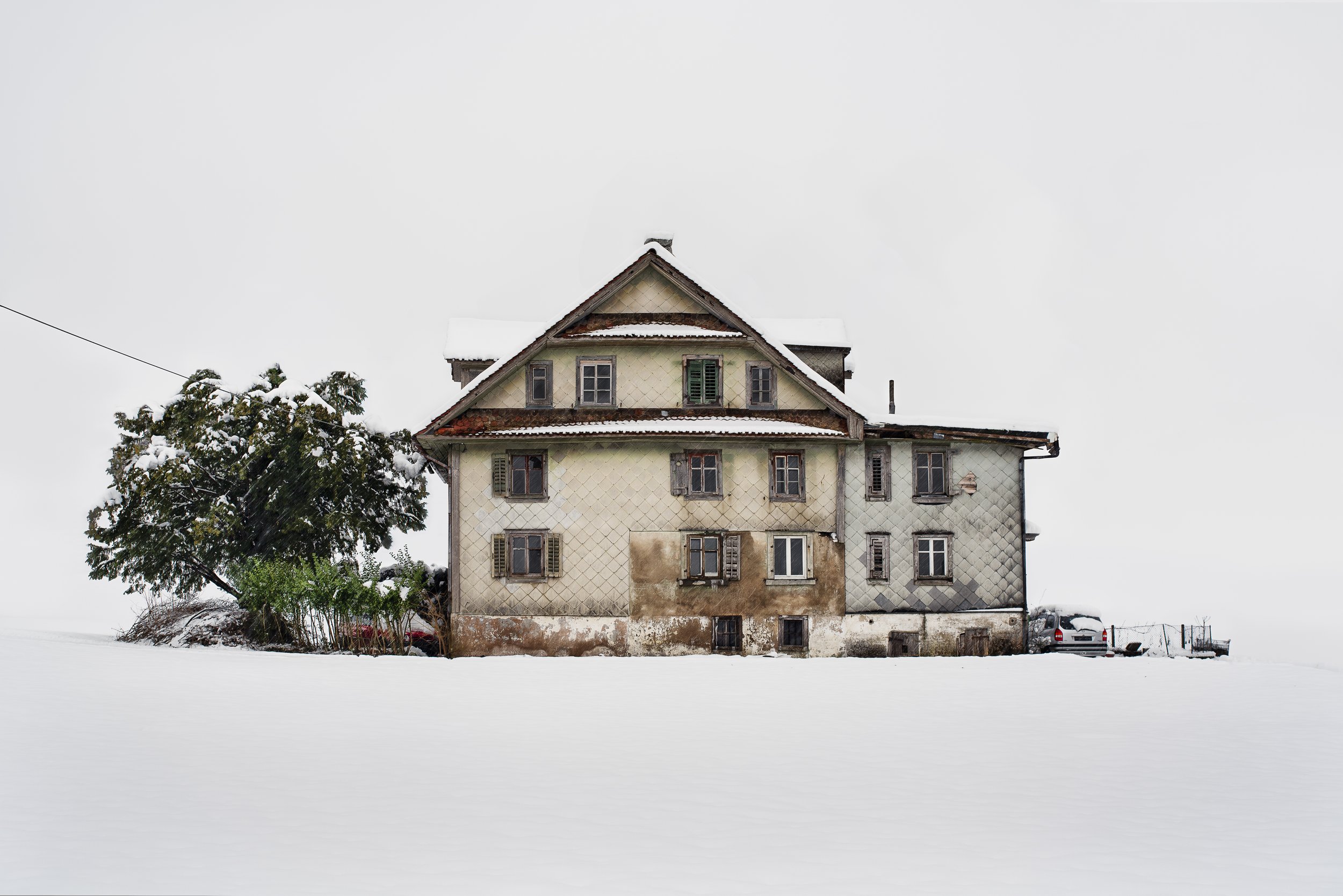Ausstellung | Love Songs - Photographies de l'intime | Maison Européenne de la Photographie | Paris
Maison Européenne de la Photographie | Paris
30. März - 21. August 2022
Love Songs
Photographies de l'intime
23rd November 2000, de la série « Personal letters », 2000 | Tirage gélatino-argentique rehaussé, manuscrit à l’encre © RongRong&inri
Die Gruppenausstellung Love Songs bietet einen neuen Blick auf die Geschichte der Fotografie durch das Prisma der Liebesbeziehungen. Die Ausstellung, die 14 Serien der größten Fotografen des 20. und 21. Jahrhunderts umfasst, vereint Meisterwerke aus der Sammlung der MEP und Leihgaben von bedeutenden zeitgenössischen Künstlern, von denen einige zum ersten Mal in Europa gezeigt werden.
Im Mittelpunkt der Ausstellung stehen die Ensembles von Nobuyoshi Araki und Nan Goldin, die den Ausgangspunkt dieser neuartigen Neuinterpretation bilden. Das Werk der beiden Fotografen wird den Serien anderer bedeutender Autoren wie René Groebli, Emmet Gowin, Larry Clark, Sally Mann, Leigh Ledare, Hervé Guibert oder Alix Cléo Roubaud und zeitgenössischer Künstler wie JH Engström & Margot Wallard, RongRong&inri, Lin Zhipeng (aka No 223), Hideka Tonomura oder Collier Schorr gegenübergestellt.
In Anlehnung an Nan Goldins "Ballade" ("The Ballad of Sexual Dependency", 1986) ist Love Songs wie eine Musikkompilation konzipiert, die man einem Liebhaber schenken würde. Der erste Teil der Ausstellung - die A-Seite - besteht aus Serien aus den 1950er bis 1990er Jahren. Der zweite Teil - die B-Seite - zeigt Bilder aus den 1980er Jahren bis heute.
Im Laufe des Rundgangs laden die Bilder dazu ein, eine Vielzahl von intimen Geschichten und eine Vielfalt von Liebesmustern zu entdecken. Die ersten Tage einer Beziehung, Hochzeit und Flitterwochen, das kleine häusliche Glück, aber auch der Schmerz der Trennung oder die letzten gemeinsamen Tage mit dem geliebten Menschen... Die von der Kamera eingefangene Intimität wird hier in all ihrer Poesie und Offenheit enthüllt.
Love Songs ist vor allem eine Reflexion über das Wesen der Fotografie. Während die Kamera oft mit dem Streben nach Objektivität in Verbindung gebracht wird, wird sie seit jeher dazu verwendet, das Subjektive, das sich jedem Konsens entzieht, einzufangen. Wir können uns nicht darauf einigen, was Liebe ist oder wie sie aussehen sollte, wie sie uns verändert oder wie sie uns die Welt sehen lässt. Nichtsdestotrotz ist sie das Thema einiger der wichtigsten und erschütterndsten fotografischen Werke des letzten Jahrhunderts.
L’exposition collective Love Songs offre un nouveau regard sur l’histoire de la photographie à travers le prisme des relations amoureuses. Aujourd’hui, comme hier, les auteurs font oeuvre de leur intimité.Réunissant 14 séries réalisées par les plus grands photographes des 20e et 21e siècles, l’exposition rassemble des chefs d’oeuvre de la collection de la MEP et des prêts d’artistes contemporains majeurs, dont certains sont présentés pour la première fois en Europe.
Au coeur de l'exposition, les ensembles de Nobuyoshi Araki et Nan Goldin constituent le point de départ de cette relecture inédite. L'oeuvre des deux photographes est confrontée aux séries d'autres auteurs majeurs tels que René Groebli, Emmet Gowin, Larry Clark, Sally Mann, Leigh Ledare, Hervé Guibert ou Alix Cléo Roubaud et d'artistes contemporains comme JH Engström & Margot Wallard, RongRong&inri, Lin Zhipeng (aka No 223), Hideka Tonomura ou Collier Schorr.
S’inspirant de la « Ballade » de Nan Goldin (“The Ballad of Sexual Dependency”, 1986), Love Songs est conçue comme une compilation musicale que l’on offrirait à un amant. La première partie de l’exposition – la face A – est composée de séries des années 1950 à 1990. La deuxième partie – la face B – présente des images des années 1980 à aujourd'hui.
Tout au long du parcours, les images invitent à découvrir une multitude d'histoires intimes et une diversité de schémas amoureux. Premiers jours d’une relation, mariage et lune de miel, petits bonheurs domestiques mais aussi douleur de la séparation ou derniers jours partagés avec l'être aimé… l’intimité captée par l’objectif est ici révélée dans toute sa poésie et toute sa franchise.
Love Songs est avant tout une réflexion sur l’essence même de la photographie. Si l’appareil photo est souvent associé à une quête d'objectivité, il est utilisé depuis toujours pour capturer ce qui est subjectif et qui échappe à tout consensus. Nous ne saurions nous accorder sur ce qu’est l’amour ou ce à quoi il doit ressembler, sur la façon dont il nous transforme ou nous fait voir le monde. Il n'en reste pas moins le sujet de certaines des oeuvres photographiques les plus importantes et bouleversantes du siècle dernier.
La mostra collettiva Love Songs offre un nuovo sguardo alla storia della fotografia attraverso il prisma delle relazioni romantiche. Riunendo 14 serie dei più grandi fotografi del XX e XXI secolo, la mostra riunisce capolavori della collezione del MEP e prestiti di grandi artisti contemporanei, alcuni dei quali vengono esposti per la prima volta in Europa.
Nel cuore della mostra, gli ensemble di Nobuyoshi Araki e Nan Goldin costituiscono il punto di partenza di questa nuova lettura. Il lavoro dei due fotografi si confronta con serie di altri grandi autori come René Groebli, Emmet Gowin, Larry Clark, Sally Mann, Leigh Ledare, Hervé Guibert e Alix Cléo Roubaud, ma anche di artisti contemporanei come JH Engström & Margot Wallard, RongRong&inri, Lin Zhipeng (aka No 223), Hideka Tonomura e Collier Schorr.
Ispirato da "The Ballad of Sexual Dependency" (1986) di Nan Goldin, Love Songs è concepito come una compilation musicale da regalare a un amante. La prima parte della mostra - lato A - consiste in serie dagli anni '50 agli anni '90. La seconda parte - lato B - presenta immagini dagli anni '80 ad oggi.
In tutta la mostra, le immagini ci invitano a scoprire una moltitudine di storie intime e una diversità di modelli d'amore. I primi giorni di una relazione, il matrimonio e la luna di miele, le piccole gioie domestiche ma anche il dolore della separazione o gli ultimi giorni condivisi con la persona amata... l'intimità catturata dall'obiettivo si rivela qui in tutta la sua poesia e franchezza.
Love Songs è soprattutto una riflessione sull'essenza stessa della fotografia. Mentre la macchina fotografica è spesso associata alla ricerca dell'oggettività, è sempre stata usata per catturare ciò che è soggettivo e al di là del consenso. Non possiamo essere d'accordo su cosa sia l'amore o su come dovrebbe essere, su come ci trasforma o ci fa vedere il mondo. Eppure è il soggetto di alcuni dei lavori fotografici più importanti e commoventi del secolo scorso.
The group exhibition Love Songs offers a new look at the history of photography through the prism of romantic relationships. Bringing together 14 series by the greatest photographers of the 20th and 21st centuries, the exhibition features masterpieces from the MEP's collection and loans from major contemporary artists, some of which are presented for the first time in Europe.
At the heart of the exhibition, the ensembles of Nobuyoshi Araki and Nan Goldin constitute the starting point of this new reading. The work of the two photographers is confronted with series by other major authors such as René Groebli, Emmet Gowin, Larry Clark, Sally Mann, Leigh Ledare, Hervé Guibert and Alix Cléo Roubaud, as well as contemporary artists such as JH Engström & Margot Wallard, RongRong&inri, Lin Zhipeng (aka No 223), Hideka Tonomura and Collier Schorr.
Inspired by Nan Goldin's "The Ballad of Sexual Dependency" (1986), Love Songs is conceived as a musical compilation that one would offer to a lover. The first part of the exhibition - side A - is composed of series from the 1950s to the 1990s. The second part - side B - presents images from the 1980s to today.
Throughout the exhibition, the images invite us to discover a multitude of intimate stories and a diversity of love patterns. The first days of a relationship, marriage and honeymoon, small domestic joys but also the pain of separation or the last days shared with the loved one... the intimacy captured by the lens is revealed here in all its poetry and all its frankness.
Love Songs is above all a reflection on the very essence of photography. If the camera is often associated with a quest for objectivity, it has always been used to capture that which is subjective and which escapes all consensus. We cannot agree on what love is or what it should look like, how it transforms us or makes us see the world. Yet it is the subject of some of the most important and moving photographic works of the last century.
(Text: Maison Européenne de la Photographie, Paris)






















































